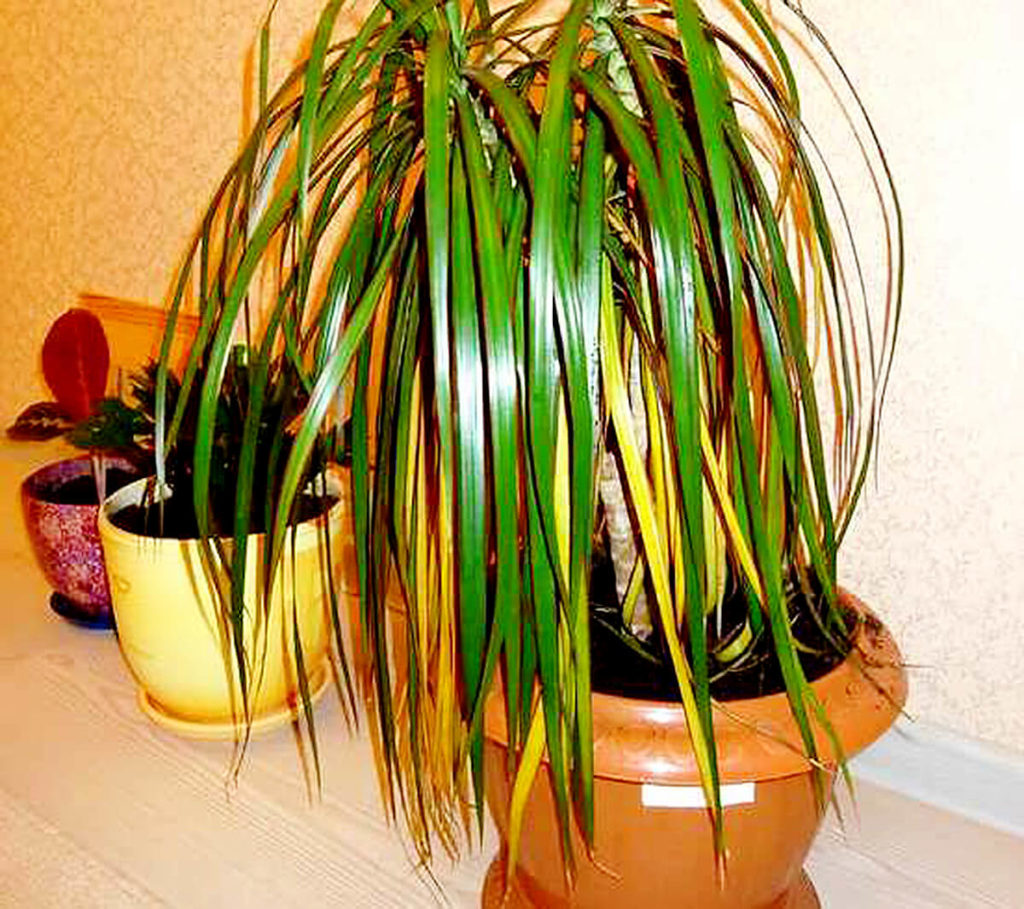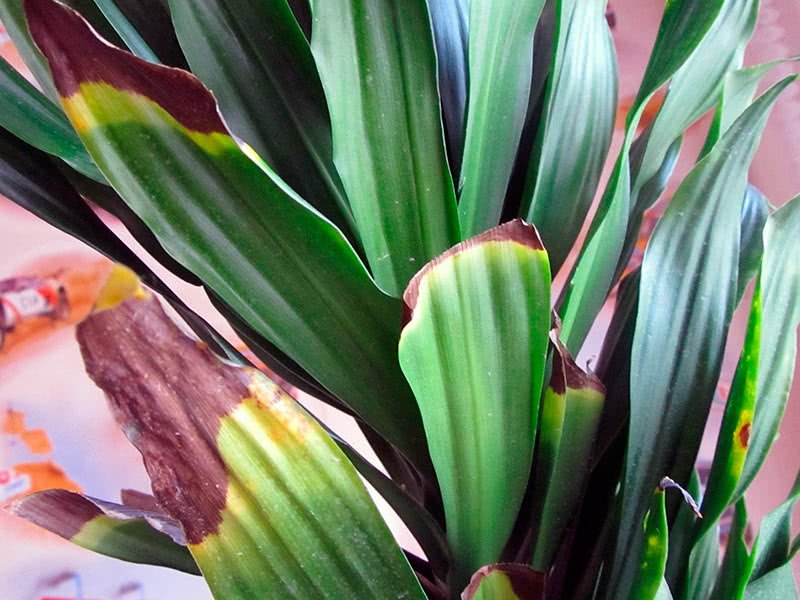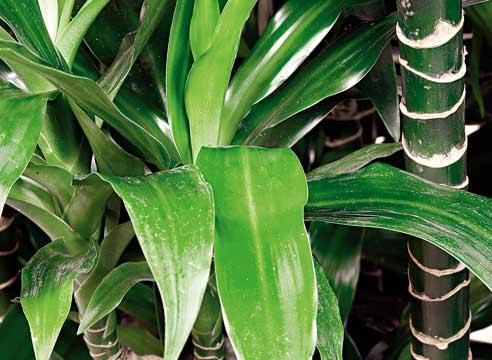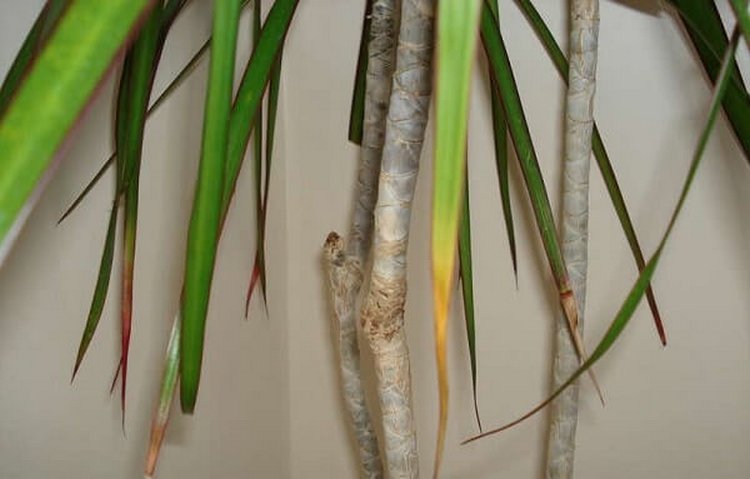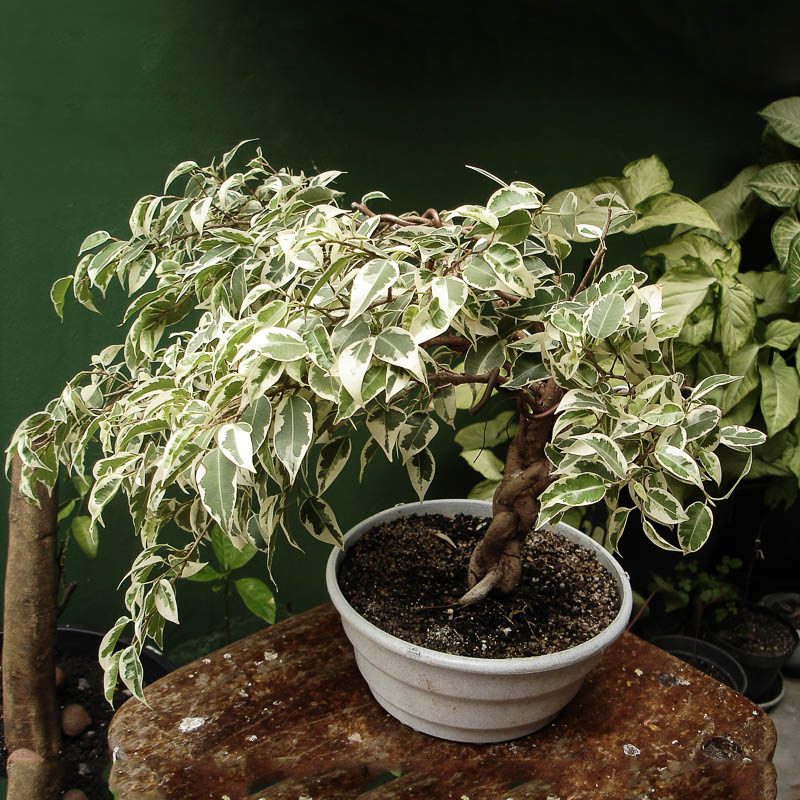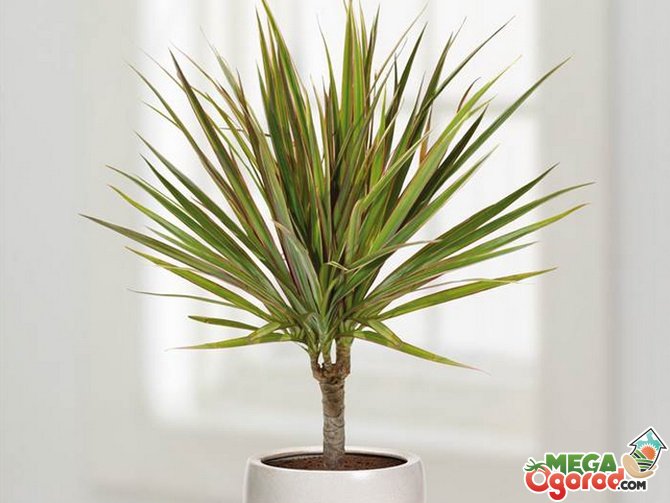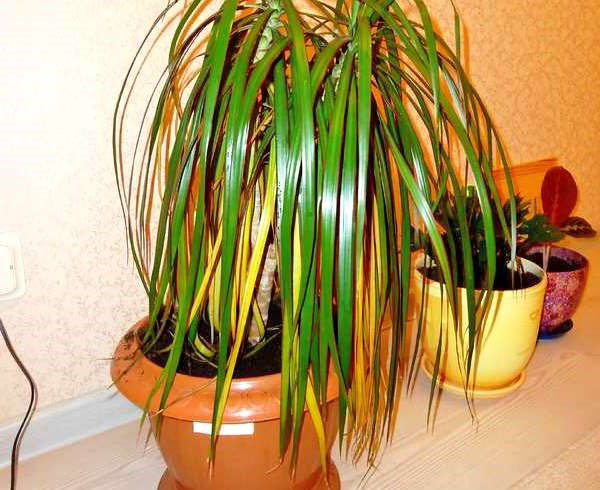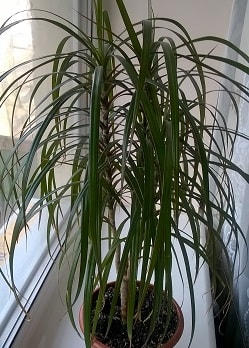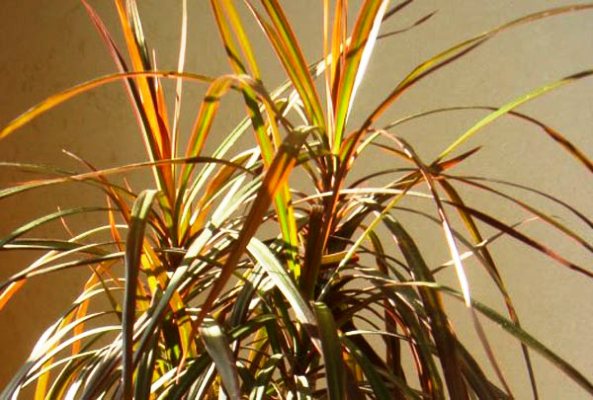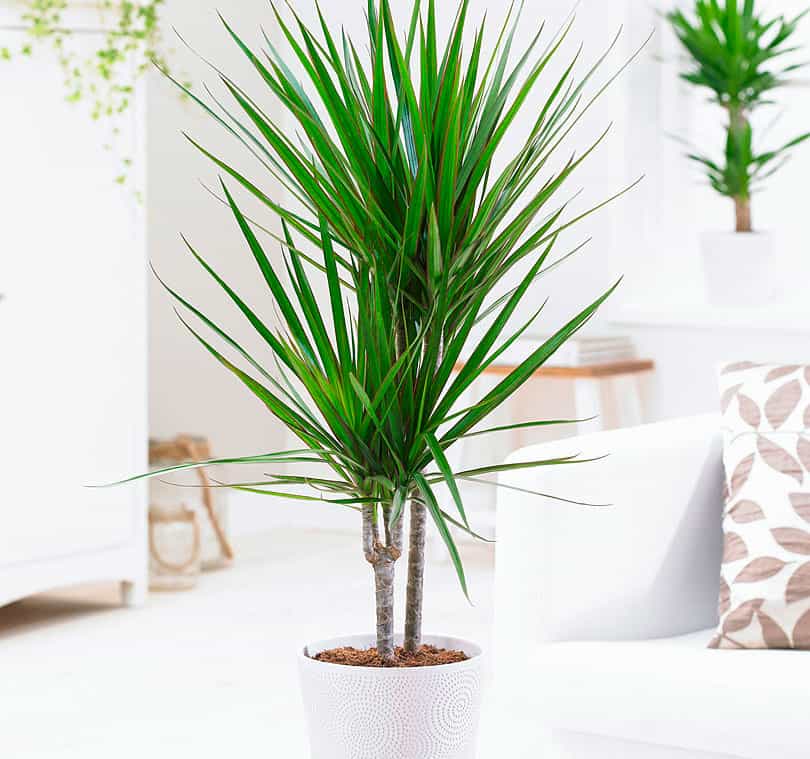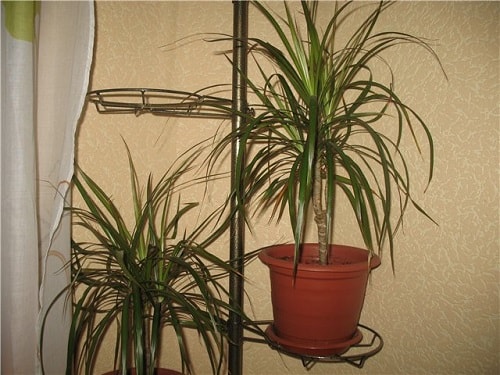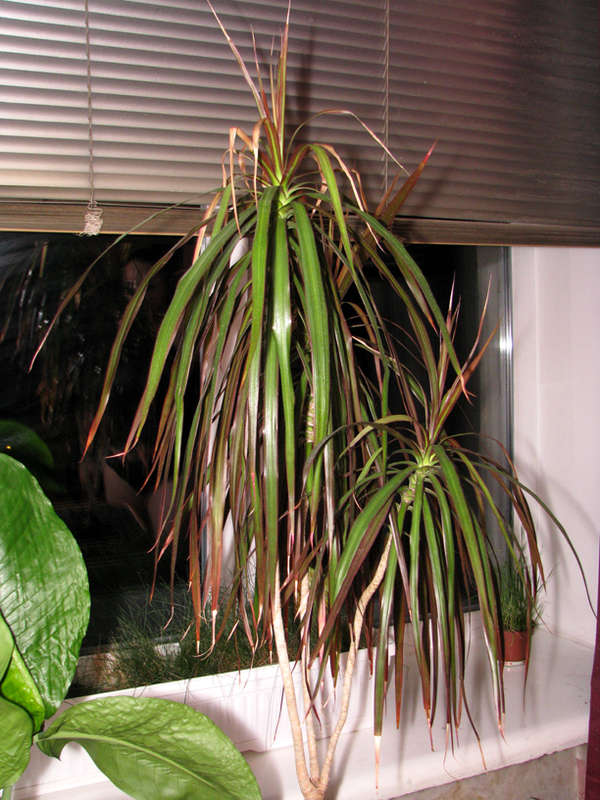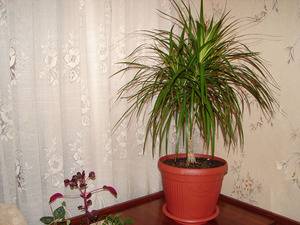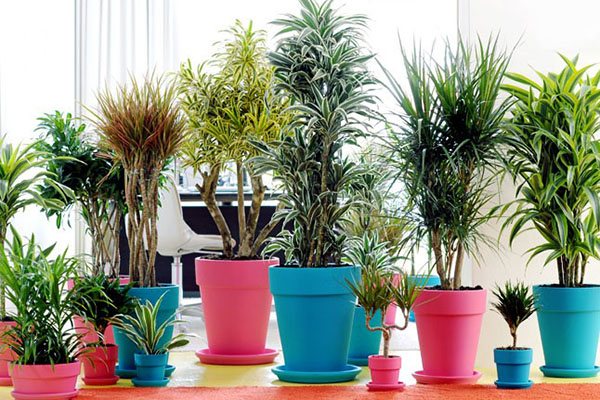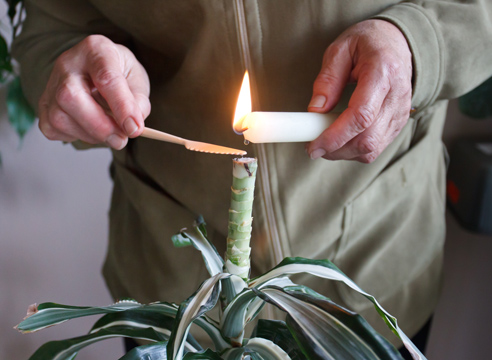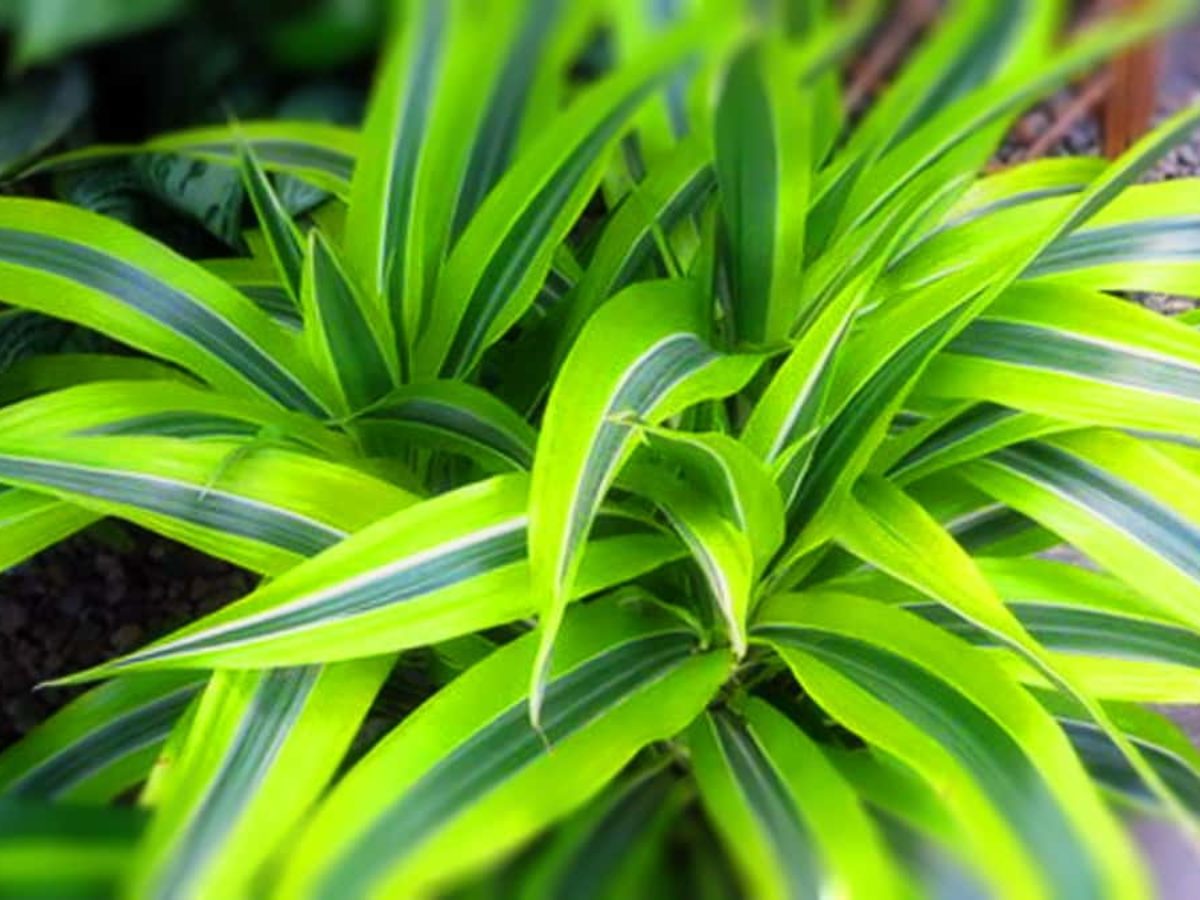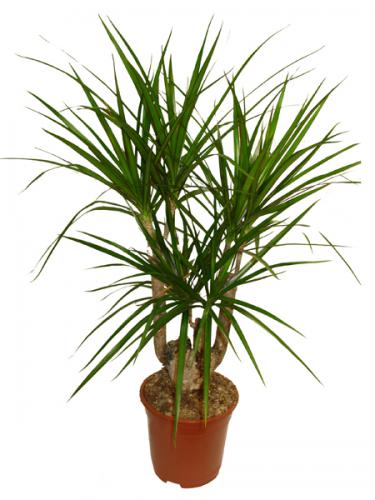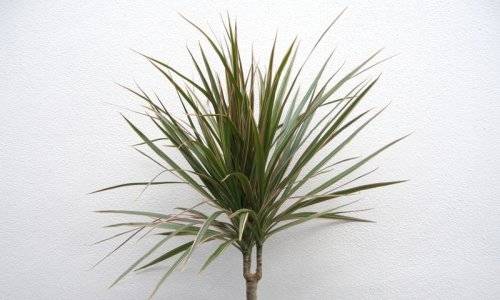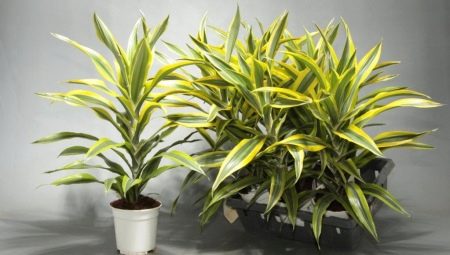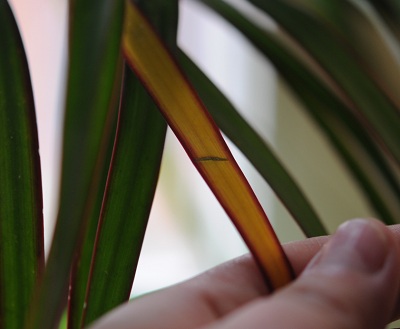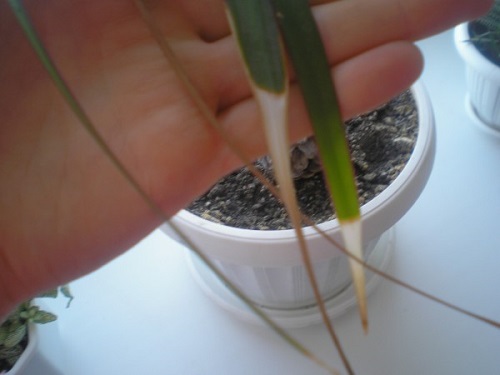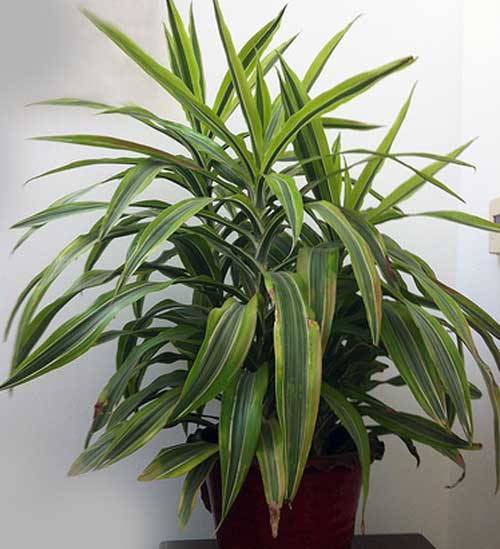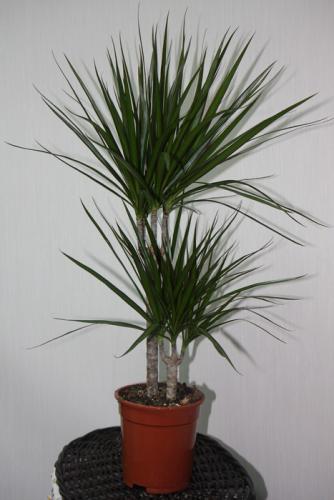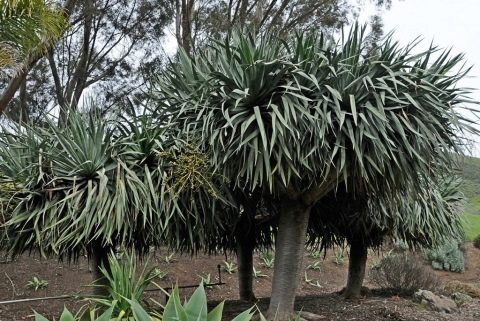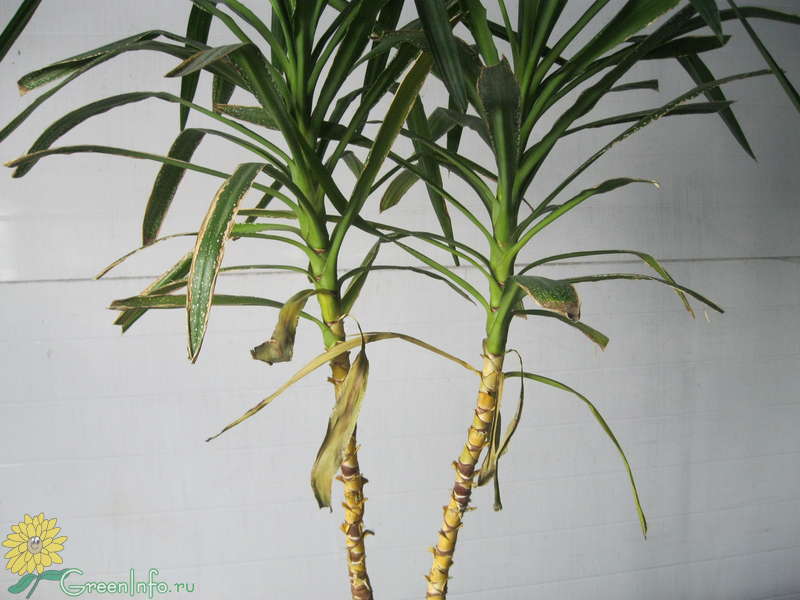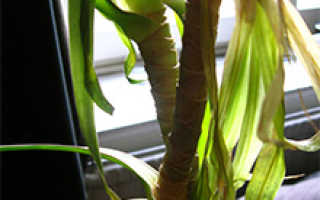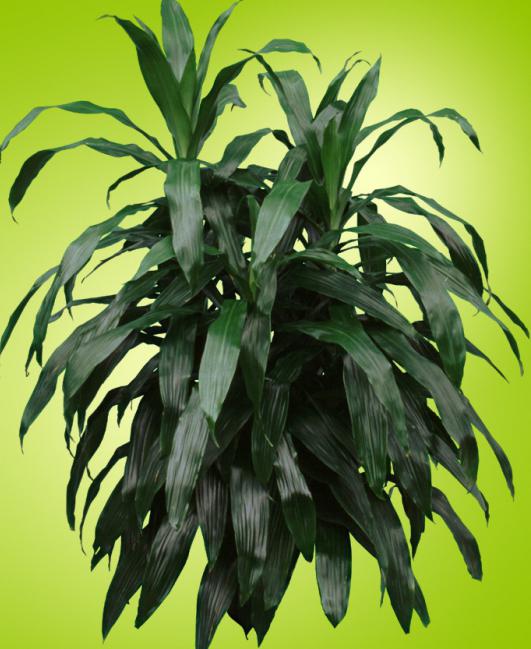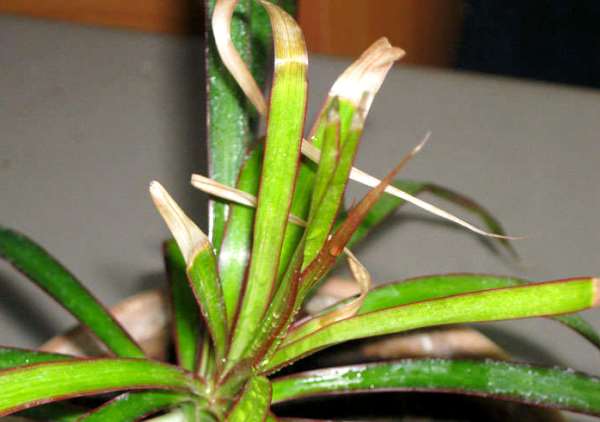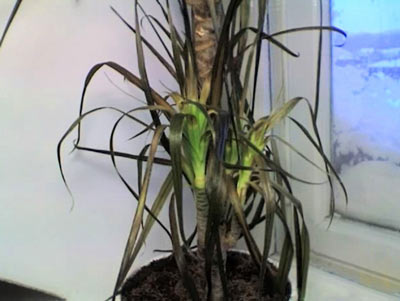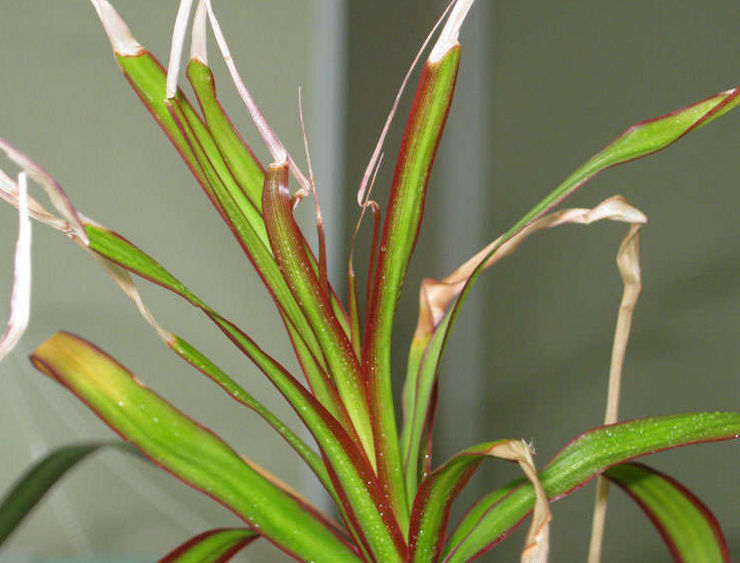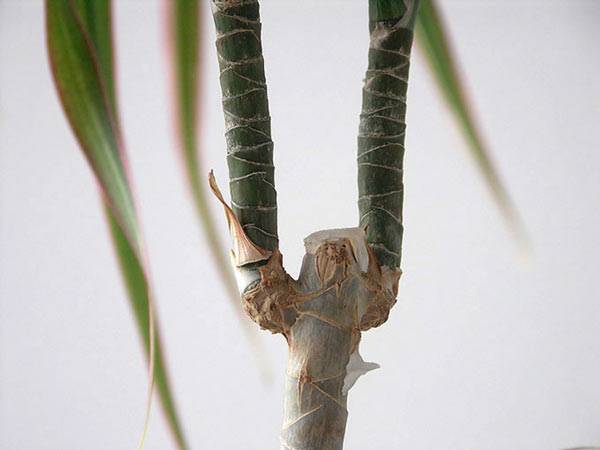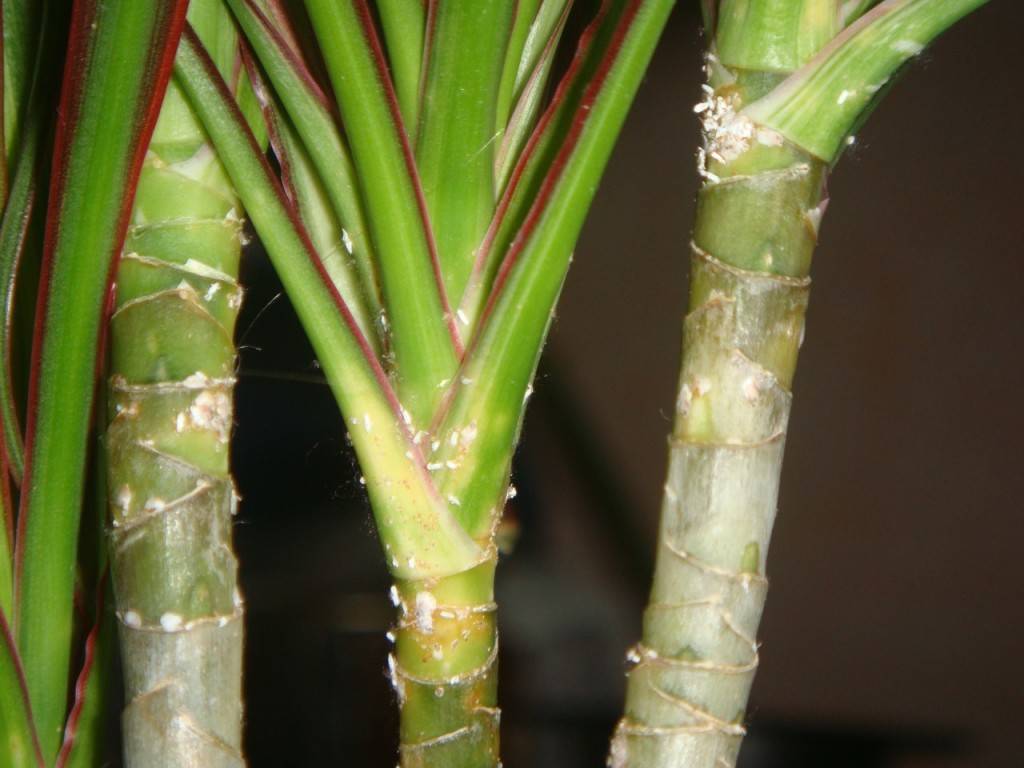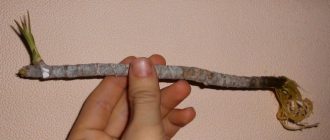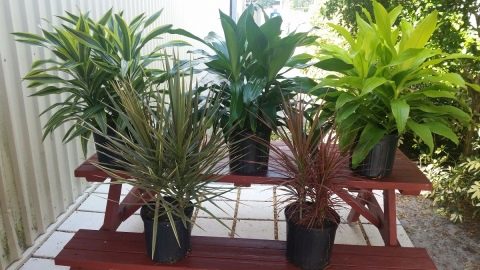I dropped the leaves, what should I do first?
If the earthen lump was poured during transplantation, it is necessary to wait until the soil dries up. At this time, only irrigation of the leaves is permissible.
Too wet soil or even mud are the main causes of wilting. Wait until the substrate dries. During this period, do not moisten - it is only allowed to spray the leaves, you can wipe with a damp cloth.
The second step is to immediately rearrange the plant to a suitable location. After transplanting, dracaena will like a place in an apartment not far from a sunny window. If possible, avoid direct sunlight - diffused light is considered more useful for a tree that is still under stress.
Some growers use artificial lighting during the adaptation period, only after the growth of new leaves they send a pot with their pet to the east or south window.
The use of a growth stimulant will help restore the plant leaf turgor
Strictly follow the instructions on the packaging of the drug, do not engage in experiments - errors in the use of the product threaten to aggravate the problem.
Experienced flower growers know very well that it is important to correct the temperature regime in the room after transplanting. If the room is above 18-20 degrees, wilting will not occur, but the tree can drop leaves along the trunk
It will not be possible to fix this anymore - the leaves will continue to hang ugly. To prevent this trouble, it is recommended to place the plant away from heat sources immediately after transplanting.
Re-transplant

It is better to transplant an adult dracaena by "transshipment", when the root system is transferred to a larger pot without destroying the earthen coma.
There is a chance that the soil is not suitable for dracaena, so it is recommended to buy ready-made soil mixture for palm trees. When mixing the substrate yourself, it should be remembered that the tree likes light soil, into which moisture and air can easily penetrate. It can be a mixture of peat, humus, sand and ordinary garden soil.
Take the ingredients in equal parts.
Adding a few handfuls of charcoal will help increase the permeability of the substrate.
How to create an optimal microclimate for dracaena
Dracaena is quite unpretentious, and there is nothing difficult in creating an optimal microclimate for her at home. But you should still listen to the requirements of the plant, trying to create an environment for her that is as close as possible to that to which she is accustomed in nature.
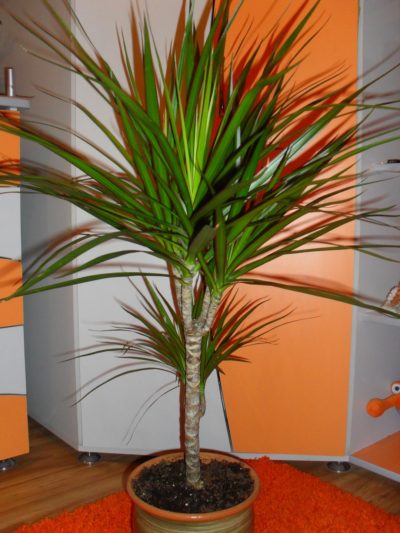
Dracaena is a popular (not least because of its unpretentiousness) indoor plant
Table: suitable conditions for growing dracaena
| Factor | Recommendations |
| Location | Not far (1–2 m) from a window facing east or west. Placement close to the southern window is not recommended in order to avoid sunburn. In the summer, if dimensions permit, you can take the container out to fresh air. Dracaena loves him, but does not tolerate cold drafts. |
| Lighting | Diffused light or slight partial shade. Species with variegated leaves are more demanding on lighting. All dracaena can survive under completely artificial light if the daylight hours lasts at least 12 hours. |
| Temperature | In spring and summer, it is moderately warm (20–25 ° C). Dracaena does not tolerate heat well. In winter, it is slightly lowered to 17–19 ° C. The lower limit is 15 ° C. Exceptions are fragrant dracaena, Hooker, Dragon (they endure a short-term decrease to 10 ° C). All species react negatively to sudden changes in temperature. A difference of 10 ° C or more can lead to the death of the plant. |
| Air humidity | It normally exists at a standard air humidity of 40-50% (Dracaena Dragon and Godsphere are especially undemanding to it), but gratefully responds to any measures to increase it. The only thing that you should not do is pour water into the sump. In winter, operating radiators dry the air greatly, therefore it is recommended to spray the ambient air with warm water every 2-3 days. In summer, in the heat, you can spray the plant itself, but so that drops do not fall into the sockets, or arrange a shower, covering the soil with polyethylene. Be sure to wipe the leaves with a wet cloth or sponge at least once a week. |
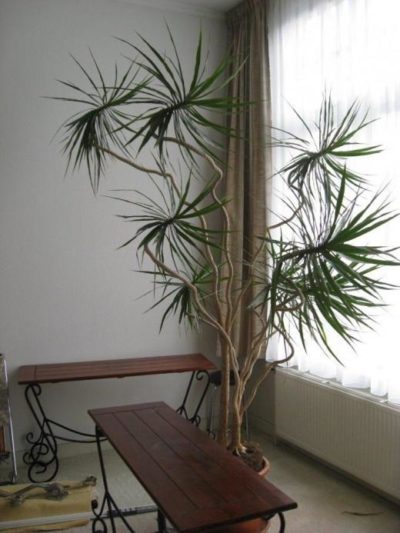
Choose a place near the window for the dracaena, it is very difficult to put it on the windowsill due to its size
In addition to the optimal microclimate, the timely applied top dressing and the correct irrigation regime have a great influence on how the plant feels.
In summer, let the soil in the pot dry out about 4–5 cm deep. This can be determined by sticking a wooden stick into the pot. One procedure in 2-3 days is enough. In winter, the intervals are increased to 5–7 days. Rot develops quickly in wet soil when kept cool. Broadleaf dracaena need to be watered more often - they have a larger evaporation area. A clear signal is drooping leaves that have lost their tone. And do not forget to loosen the soil after each procedure.
As for dressing, there are special fertilizers for dracaena. The tree is watered with a nutrient solution every 20-30 days, moistening the soil well in about half an hour
If you are using a generic indoor plant product, pay attention to the composition. Excess phosphorus and nitrogen can lead to a deterioration in the appearance of the leaves.
And dracaena categorically does not tolerate fluorine.
Diseases
Like all plants, dracaena is susceptible to certain diseases.
Alternaria
This ailment is manifested by the manifestation of rounded brown and black spots on different parts of the plant. In these spots, rings of dark and light colors are clearly visible. With the further development of the disease, the leaves turn black and are affected by the spores of the fungus.
Heterosporosis
The disease is characterized by the formation of yellow spots, which soon become light brown with a dark line around.
Over time, the spots increase and a dark coating with fungal spores appears on them. If the plant is left untreated, the leaves will begin to dry out.
Phylostictosis
With this disease, large yellow-brown spots with a greenish border appear on the dracaena. The spots can be round or indefinite in shape, later covered with spores of the fungus.
Phylostictosis affects adults and old dracaena when the soil and air moisture regime is violated.
Bacteriosis
This disease causes softening of the tips of the leaves, which further leads to their decay.
Another manifestation of bacteriosis is dark, decaying areas on the leaf, surrounded by yellow oily stripes. It is also possible for small, round ulcers to form on the stem.
Bacteriosis is an infectious disease caused by a number of reasons: high humidity of air and soil, lack of fertilizers, high temperature of the surrounding atmosphere.
Spotted wilting
This viral disease is rare. Brown spots and longitudinal lines appear on the leaves. Young ones develop slowly and become deformed.
Treatment of diseases
Treatment of diseases such as alternaria, heterosporosis, phyllostictosis is carried out using fungicidal preparations. You can use oxyhom, topaz and other medicines containing copper.
When infected with bacteriosis, salvation of dracaena is not possible, since this insidious disease develops rapidly and instantly leads to death. The plant is destroyed.
When affected by spotted wilting, the affected parts are destroyed.
Top dressing and transplanting dracaena
This plant responds well to periodic feeding. It especially needs nitrogen.Most often, the lack of this element, as well as insufficient air humidity, do not have the best effect on a plant such as dracaena. The tips of the leaves turn yellow, wither and die off. To prevent this, it is strongly recommended to feed the palm tree with special complex fertilizers. This should be done during the active growth of the plant, from April to the end of August.
In order for your flower to grow well and have an abundant deciduous mass, it is advisable to sometimes transplant it into a new substrate. If dracaena leaves turn yellow, dry out, and new ones grow extremely slowly and turn black, then it's time to change the pot and potting soil. Usually a flower that has been in the same substrate for more than three years is sick and grows poorly. The fact is that in the old soil a huge amount of salts accumulates, which impedes the flow of nutrients into the plant.
To make the dracaena feel good, do the transshipment every two years, in the spring. The land can be used specially for palm trees. You can add a little charcoal and sand to it to improve the friability of the substrate. In addition to transshipment, you need to replace the topmost soil layer in the pot with a new one every year.
What should be done
Let's take a closer look at why dracaena sheds leaves and figure out what to do with it.
As already mentioned, the age of the plant is the main cause of leaf fall. Each leaf lives for a certain amount of time, and then turns yellow and soon falls off. This is a natural process in nature and should not be resisted. But, very often it happens that a still quite young plant begins to shed its leaves. In this case, carefully review your flower care. You may be watering the flower incorrectly. Due to a lack of moisture, the lower leaves begin to dry out gradually, and then completely fall off. The solution to this problem is very simple: do not forget to water the flower in time, and then you will retain the attractive appearance of your beauty.
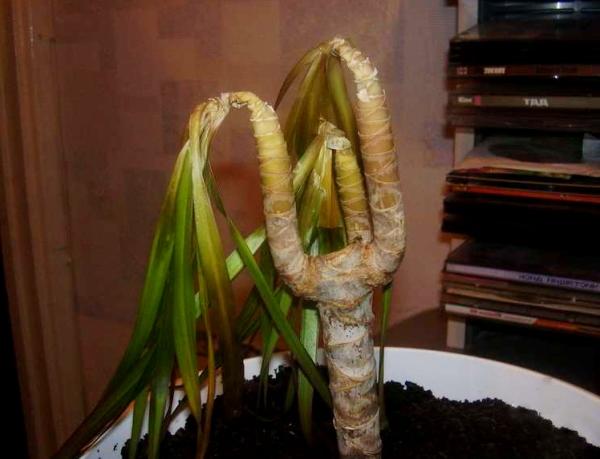
Sometimes it happens that, for fear of not adding water, flower growers overfill their dracaena. This cannot be done either, even considering that she loves high humidity and good watering. If the leaves have become lethargic and have fallen off in a fairly short period, then this is a sure sign that the roots are rotting due to an excess of water. Another sign that signals improper watering is a soft, sluggish trunk. Only immediate actions can save the plant: remove it from the pot, clean it from the soil and let the roots dry well, while removing the decayed roots. Then place the flower in a pot of new soil and do not over-water it in the future.
Another reason, as mentioned above, may be the unsuitable temperature, namely cold or drafts. In this case, the leaves fall off the flower without even having time to turn yellow. The plant tolerates temperatures below +15 degrees very poorly and its prolonged exposure to the cold will lead to inevitable death. To save the flower, immediately transfer it to a warm room. If you surround the dracaena with proper care and attention, then, perhaps, she will be able to move away from hypothermia, and will again delight you with her exotic beauty.
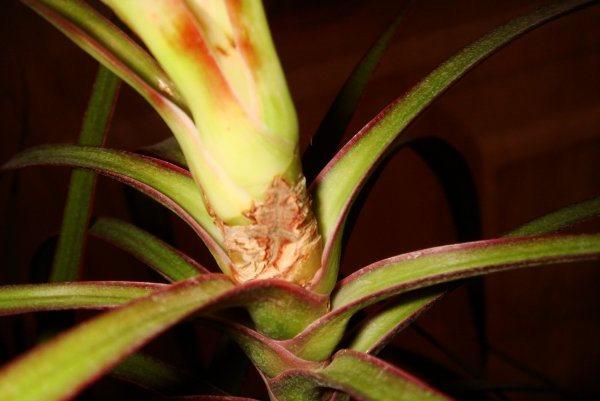
If everything is in order with leaving, and you follow the rules, then perhaps the dracaena is sick or infected with parasites. A sure sign of a disease is yellowing between the healthy area and the affected area. Experts recommend not to treat the affected areas, but to get rid of them as soon as possible and get rid of the causes that cause this disease.
Having dealt with the main reasons due to which dracaena leaves fall, you now know what to do to prevent such problems. After all, it is always better to avoid a problem than to deal with it, so do not spare your time in leaving. In response, she will delight you with her exquisite beauty for a very long time.
Dracaena and caring for her
 This exotic flower has long been loved by many. He will always decorate any room with his appearance. Dracaena belongs to the Dracene family. It is also called a false palm.
This exotic flower has long been loved by many. He will always decorate any room with his appearance. Dracaena belongs to the Dracene family. It is also called a false palm.
This evergreen shrub or tree grows in its natural environment in the tropics and subtropics of Africa, less often on the islands of southeast Asia. In total, there are more than 100 plant species, but only 40 species are grown in greenhouses and no more than ten at home.
Its beautiful green leaves add flavor to the interior of the room. There are some types of dracaena that do not resemble traditional dracaena in their appearance. In care, almost all dracaena growing at home are not very demanding.
If you take care of her properly, there should be no problems. With careful and competent care, the plant can live at home for up to 15 years. Sometimes the plant can bloom, for example, dracaena fluffy.
Experts recommend paying special attention to watering and temperature for the normal development of a houseplant. Dracaena feels good if there is no temperature drop in the room
On average, it should be 18-25 ° C. The leaves suffer from sudden changes and drafts, their edges begin to freeze and then dry out.
Dracaena: tips of leaves dry, what to do
This question is asked by many flower lovers, because almost everyone who has a dracaena is faced with this problem. We will try to consider the most common reasons why the leaf tips of dracaena dry out.
- Watering. This is also one of the main reasons. There is not enough moisture, irregular or poor watering. As the clod of earth in the pot dries, the dracaena needs to be watered. Even in winter, the flower is watered at least once a week.
- Drafts. The plant immediately reacts negatively to cold air and drafts in the room. It should not be placed on a windowsill during cold seasons, and should not be kept close to the air flow from the air conditioner. From the cold air, the soil begins to lose moisture strongly, the leaves of the flower react to this painfully.
- The soil. It affects the appearance of the palm tree, so it should be chosen correctly. Over time, from irrigation and due to hard water, the composition of the soil is disturbed. The compacted soil prevents the root system from developing and as a result, the leaves dry and fall off. You can solve the problem by transplanting the flower into a new potting mix that is fresher and more nutritious.
- Lighting. Dracaena loves light, but without direct sunlight. She needs diffused lighting in a well-lit place. From the bright sun, burns appear on the leaves in the form of spots, then they dry.
- Diseases. Infectious diseases are transmitted through soil from other diseased flowers. Diseases are also transmitted when flowers are too close.
Air humidity. The flower belongs to the tropical species, so it needs to create favorable conditions with a comfortable level of humidity. It is believed that a suitable moisture level for dracaena should be in the range of 60-70%.
There is no such level of humidity in our apartments for various reasons - heating, summer heat. It is necessary to increase the humidity by spraying the flower with warm water from a spray bottle, use air humidifiers.
Why do the leaves turn yellow
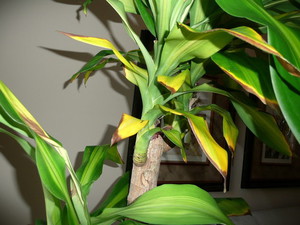 Dracaena leaves live for about two years. Old hardwood starts to turn yellow at the tip.
Dracaena leaves live for about two years. Old hardwood starts to turn yellow at the tip.
If this happens, the leaves must be removed. It often happens that the leaves of a young plant begin to turn yellow for unknown reasons.
Experts say that yellowness appears for several reasons:
- improper care;
- improper watering;
- insufficient nutrients;
- pests.
The appearance of yellowness provokes excessive watering of the plant. In summer, it is recommended to water the flower 1-2 times a week. At high temperatures, it is advisable to put the flower in the bathroom more often and spray it.
This procedure has a very positive effect on the deciduous mass, refreshes it. After bathing, no moisture should remain in the leaf axils. For this reason, the leaves often begin to turn yellow.
The plant responds very well to feeding with a high nitrogen content. Liquid fertilizer with nitrogen can be added to the water for irrigation so that the dracaena receives all the necessary substances during the period of intensive growth.
This phase takes place from March to August. Top dressing is sold in a flower shop and must be bought, since a lack of nitrogen will cause yellowness on the leaves.
Dracaena leaves turn yellow and fall
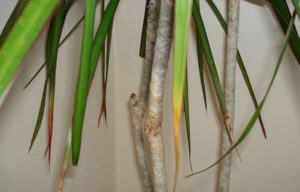 Loading …
Loading …
Yellowing and loss of leaves is the most common difficulty in growing dracaena.
Do not sound the alarm if the lower leaves of the dracaena sometimes dry out. This is a normal plant growth process. Over time, it grows to a significant size and its trunk becomes bare. Only lush bunches of leaves remain at its tops.
But if young leaves begin to turn yellow and fall off, it is necessary to look for an error in caring for the plant. Dracaena usually reacts in a similar way to low humidity, sudden drops in temperature, drafts and excessive watering. Sometimes the plant is affected by pests, because of which the leaves begin to fall off.
Low humidity
Usually dracaena tolerates low humidity well, despite the fact that its homeland is the tropics.
But with very dry air, the tips of its leaves first dry out, and then they become soft, lethargic and turn yellow throughout the crown. As a result, this leads to their mass drying and falling off.
A strong decrease in humidity in the room where the dracaena grows should not be allowed. In case of excessive dryness, it is advisable to install a humidifier. Dracaena can be kept in a deep pallet with a damp substrate - pebbles, expanded clay or moss. Good results are obtained by spraying the plant with settled water twice a week.
Cold and draft
Dracaena reacts painfully to rapid changes in conditions of detention. She does not tolerate a sharp drop in temperature and drafts. At the same time, its leaves may turn yellow or darken, and then fall off.
For the plant, you must choose a place protected from drafts. Do not place it near an opening window or balcony door.
When airing, especially in winter, it is advisable to take the dracaena to another room.
A sudden drop in temperature should also be avoided. Stable living conditions are the key to the health and beauty of this flower.
Excessive hydration
Another mistake in caring for dracaena is frequent and abundant watering. This can easily lead to root rot, even in the hot summer period.
And in winter, when the plant is kept at a low temperature, the risk of developing root rot increases significantly.
Decay of dracaena roots immediately leads to changes in the ground part of the plant. Its leaves begin to turn yellow, dry up and fall off, and not only old, but also young leaf blades turn yellow.
To prevent root rot, it is necessary to adhere to a clear watering schedule for dracaena.
You should not water the flower if the top layer of the earth is still wet. The soil in the pot between waterings should dry out by at least 2 cm. Therefore, even in very hot weather, dracaena is watered no more than 2 times a week, and in winter, the watering intensity is reduced to 3 times a month.
If decay has already occurred, the dracaena should be transplanted into new soil. A new pot needs good drainage to keep the water from stagnating. With root rot, a complete transplant of dracaena is carried out with the removal of the earth and a thorough examination of the root system. All rotten, dark and dry roots should be removed.
Lack of feeding
In order for the dracaena to look beautiful, it needs regular feeding. Dracaena is fed twice a month in spring and summer.
If feeding is not carried out regularly or is absent at all, the plant does not receive enough nutrients for its growth.This leads to the fact that it sheds the lower leaves much faster than in the normal state.
If the dracaena does not receive nutrition for a long time, only a few of the youngest leaves remain on it, and all the rest turn yellow and fall off.
Cramped pot
If the dracaena has not been transplanted for a long time, its roots become cramped in the pot. They begin to emerge to the surface and through the drainage hole.
Without transplanting, the soil in the pot is severely depleted, the plant does not receive normal nutrition. Because of this, the flower is intensively losing the lower leaves. If the dracaena is not transplanted for a long time, it may die.
Top dressing will not help here. Young specimens must be transplanted every year into a larger pot and new soil. It is enough to replant mature plants every 3 years.


